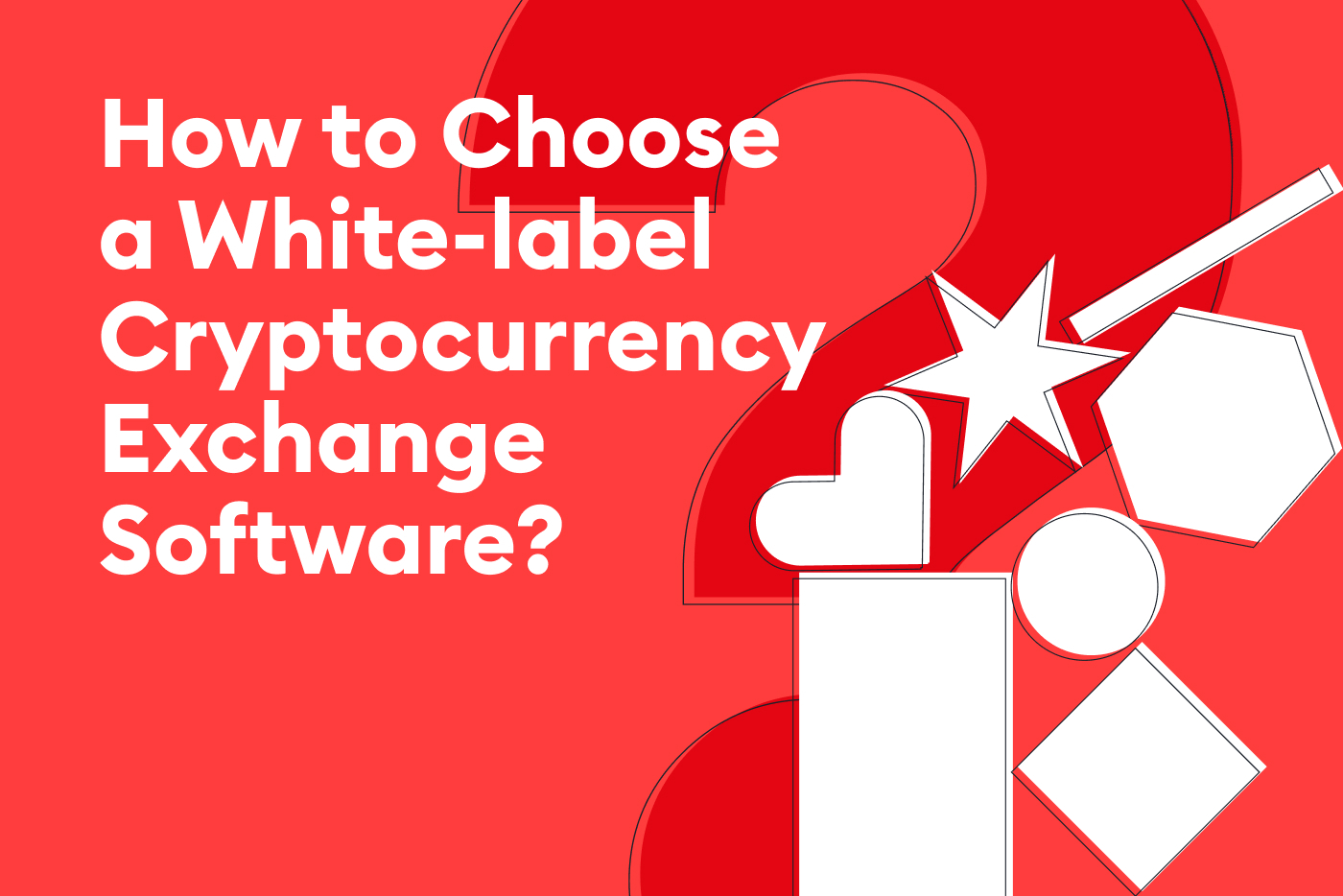
Digital asset exchange functionalities entail providing a safe marketplace for participants to trade in, with the intention of mitigating risks besides those inherent to the trading activity itself. The corresponding functionalities depend on a series of characteristics, with the first and most important being the type of exchange the trading takes place in (centralized v decentralized). Similarly, the type of participants, geographic location, and users’ jurisdiction are other important considerations.
[It is worth doing a quick review on the differences and similarities between centralized (CEX) and decentralized (DEX) exchanges. The characteristic that bestows their names is the presence -or absence- of intermediaries. In the case of CEXs, exchanges take custody of users’ funds. No transaction can take place if it’s not through the exchange. DEXs, on the other hand, operate through a set of rules – smart contracts- that allow users to trade digital assets in a peer-to-peer manner. The reason we define this is to clarify in advance that the nature of each one can determine its functionalities, and will be subject to different requirements. You can find out more about the difference between the two here [1] ].
We classify functionalities in two categories. The first is a ‘utility’ one, which includes everything that is needed to run the exchange and attract users. The second one is the ‘services’ category, which aims to encompass additional offerings.
Utility functionalities
Let us start with an unusually touched upon topic on the functionalities of exchanges: the listing process. Listing determines two main things: firstly, which digital assets can be included and offered on the platform, and secondly how it will be done. Throughout the process, a variety of requirements must be met:
Token issuer requirements include understanding the business in which the issuer is in, its team, governance procedures, technological and regulatory considerations, reputational risks, and others.
- Due diligence on token issuer comprises a second requirement that must be fulfilled by exchanges. Compliance searches on token team, source code and internal procedures review, as well as record-keeping activities must be carried out. This must be done not only on a first instance basis, but with certain periodicity.
Leaving the listing process behind, we turn our attention to see how exchanges address market manipulation, pricing, and liquidity, all of which are major factors in ultimately determining how successful an exchange is.
Market manipulation: In previous articles we dove into regulation on digital currency. We saw that it failed to keep-up with the fast paced industry, leaving actors to self-police for extended periods of time. Even though countries are aiming to pass digital asset legislation and provide a clear playing field, exchanges must still carry out anti-manipulation investigations to mitigate market abuse. Setting trading rules, performing meticulous reviews of suspicious activity and establishing controls where fraud could be committed, are several actions used to level the playing field.
Going hand-in-hand, pricing & liquidity are considered the other two main factors in determining results on digital asset exchanges. Highly liquid exchanges have minimal price impact over different order sizes, thus inviting all types of participants (individual investors, retail traders and institutional investors).
Anti-Money Laundering (AML) and Counter-Terrorism Financing (CTF) controls must be carried out by digital asset exchanges in order to comply with current regulations. Though specially utilized in exchanges that provide fiat-to-crypto currency pairs (and vice versa), it is getting increasingly more common for even unregistered exchanges to implement these, given the relative safeness they deliver, versus not having these controls in place.
Custody is a crucial functionality reserved only for centralized exchanges, who are in charge of holding and securely maintaining the users’ digital assets. Two main ways of storing funds are “hot” and “cold” storage systems. The state basically depends on whether the wallet is connected to the internet. Cold storage keeps digital assets offline while hot ones are online and used to cope with withdrawal requests. Exchanges should have best practices in mind when dealing with both types of wallets, like using hardware security modules (HSM) for keeping keys, multi-signature (“Multi-Sig”) for initiating transactions, and constant storage audits [2].
On a final note, cybersecurity intensive exchanges set the basis for how safe the funds they take custody of are. Attacks occur constantly and will continue to exist as a mechanism to ensure exchanges don’t renegade their security duties.
Exchange services
Besides utility functionalities, we can find complementary services that make it attractive for participants to utilize an exchange, giving them competitive advantages over other exchange providers.
Most – dare I say all – successful exchanges provide liquidity services. They act as intermediaries between those who want to buy and sell. Deep liquidity pools are more of a necessary (rather than a sufficient) condition for attracting large players and sizable investments.
The digital asset spectrum (stablecoins, project tokens, etc.) vary from exchange to exchange, and can ultimately determine where a participant decides to trade. Exchanges offering a wide range of stablecoins and DeFi-protocol tokens have an advantage over those who don’t. Similarly, centralized exchanges continue holding dominance over decentralized ones mainly because they ally with institutional investors (liquidity makers), and offer fiat-to-cryptocurrency and cryptocurrency-to-fiat pairs [3].
Including lending/borrowing and money market services helps exchanges be in the lead. Lending and borrowing cryptocurrencies have a series of advantages over regular assets; cryptocurrency lending is more accessible, faster, more flexible, with lower fees, and arguably safer. Liquid, Coinsbit, Bitrue, Tokens.net, and Crypto.com are some of the players that offer both exchange and lending/borrowing services [4].
Exchanges with a derivatives platform that have the option of entering into futures, contracts and/or options are more likely to mainly attract experienced traders looking for various ways of playing the market and hedging positions. At the moment, under 20 exchanges can be found on the data aggregating platform CoinMarketCap [5].
As with any blockchain application trying to outperform a traditional financial service, what good would an exchange be if it didn’t account for users’ needs for managing their assets? Integral asset management tools help investors maximize their results. Additionally, market screeners, spread analysis, watchlists, price charting and having the possibility of linking third-party softwares (trading bots, own code for regulating trading activity, etc.), is another necessary condition for exchanges to provide the best user experience and attract more participants while fueling the liquidity wheel (high liquidity attracts more participants and vice versa, creating a continuous loop).
A note on functionality
The lines between exchanges and wallets are getting increasingly blurred. In the University of Cambridge 2017 Global Cryptocurrency Benchmarking Study [6], it was estimated that 52% of wallets surveyed provide an integrated currency exchange feature, of which 80% offer national-to-cryptocurrency exchange services using one of three existing exchange models. These numbers have since gone up given the higher competition that providers are facing, forcing them to amplify the product offering and user experience (usability).
Scalable Solutions
Given that it is nearly impossible for an exchange to hold the reins in every aspect and category mentioned above, whomever wants to trade digital assets faces a crossroad with plenty of trade-offs. The exchange that can provide the best liquidity might not be the one with the best security; the decentralized one that provides anonymity perhaps does not have institutional market makers and the best liquidity, and so on. A thorough research must be carried out to find out which one best suits one’s needs and preferences.
At Scalable, we aim to be robust in every area that is of importance. Our white label exchange solution can be tailored to focus on what matters to our clients. You want to tap liquidity from the deepest pools across the world? You got it. How about battle-tested security and impenetrable custody service? We can provide that. Setting up tokens on any real or digital asset? No problem.
Some of the world’s leading platforms already use our technology to power their exchange and provide the best possible service to their clients.
We continuously strive for excellence and besides centralized exchange infrastructure, we are working towards launching a decentralized exchange in the near future, which is set to:
- Overcome the most evident and pressing challenges, technological and financial, that are present in most popular DeFi applications.
- Create an ecosystem encompassing key financial services in a decentralized fashion with focus on UX, brand, education and accessibility.
- Enable both brokerage and exchange layers, allowing for several brokerage instances to share a common liquidity pool.
Schedule a demo to access leading digital asset exchange infrastructure.
References
[1] For a detailed discussion on CEX/DEX please refer to our previous entry : “Exchanges: Centralized v Decentralized”. http://scalablesolutions.io/news/2205/
[2] For a more detailed explanation of wallets used in storing users funds, please see: “Custodial v Non-custodial Wallets”. http://scalablesolutions.io/news/custodial-v-non-custodial-wallets/
[3] Uniswap, a decentralized exchange currently transacting US$ +370M in daily volume with a maximum reaching US$ 3.36B in October [6].
“Uniswap Protocol Analytics.” Uniswap Info, info.uniswap.org/home. Accessed November 17th, 2020.
[4] Actually, hundreds of cryptocurrency lending and borrowing platforms exist, but only a small percentage of them offer other services (like integrated/third-party exchanges and wallets)
[5] “Top Cryptocurrency Derivatives Exchanges Ranked.” CoinMarketCap, coinmarketcap.com/rankings/exchanges/derivatives/.
[6] Hileman, G., & Rauchs, M. (2017). Global cryptocurrency benchmarking study. Cambridge Centre for Alternative Finance, 33, 33-113.
General Sources
Austen, Mark, and Laurence Van der Loo. “ASIFMA Best Practices for Digital Asset Exchanges.” Lw.com, June 2018, www.lw.com/thoughtLeadership/ASIFMA-best-practices-digital-asset-exchanges.

